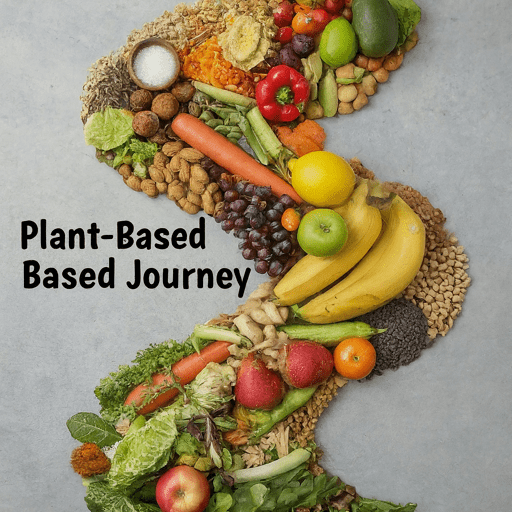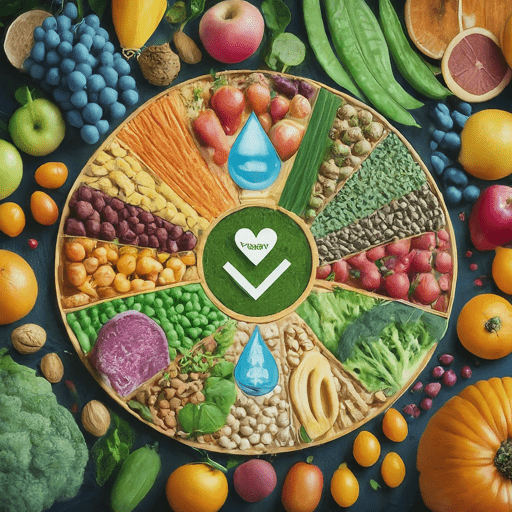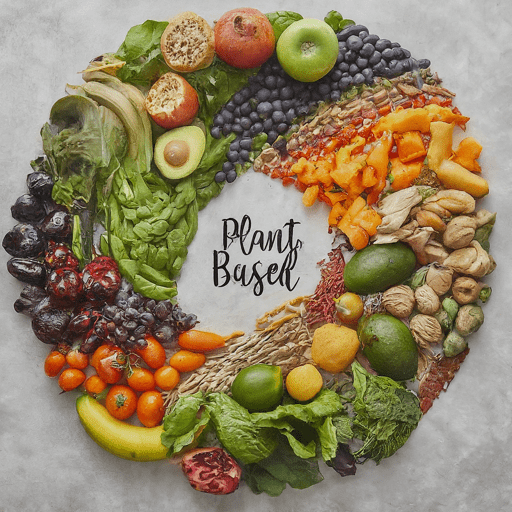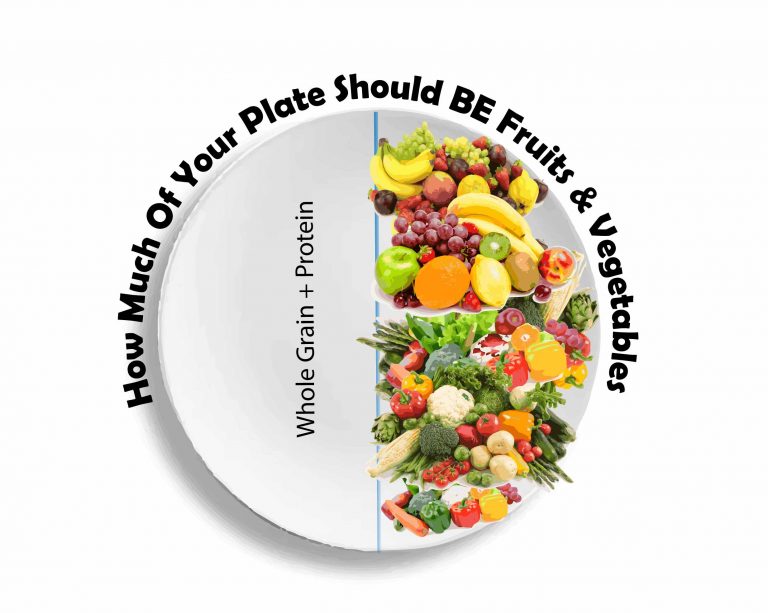How To Transition To Plant Based Diet

Have you ever considered taking a step towards a healthier lifestyle that benefits not only your body but also the planet? If so, then a plant-based diet might be the perfect path for you.
This style of eating prioritizes whole foods derived from plants, including fruits, vegetables, whole grains, legumes, nuts,and seeds. While often confused with veganism (which excludes all animal products), a plant-based diet offers more flexibility, allowing for occasional inclusion of animal products.
The reasons to explore this way of eating are abundant. From improved health outcomes to a reduced environmental footprint, a plant-based diet offers a win-win situation for you and the planet.
So, How To Transition To Plant Based Diet?
The Power of Plants: Why Go Plant-Based?

Here are some key benefits that might inspire you to embark on this exciting culinary adventure:
- Enhanced Health: Studies have shown that a plant-based diet can significantly improve your overall health. It can lower the risk of heart disease, type 2 diabetes, and certain types of cancer. Plant-based foods are typically lower in saturated fat and cholesterol but rich in fiber, vitamins, and minerals, leading to better blood pressure control,improved digestion, and a stronger immune system.
- Environmental Champion: Animal agriculture contributes significantly to greenhouse gas emissions,deforestation, and water pollution. By embracing a plant-based diet, you’ll be actively reducing your environmental impact. Studies show that plant-based diets require significantly less land and water compared to traditional meat-centric diets.
- Ethical Considerations: For many, the ethical treatment of animals is a significant concern. A plant-based diet aligns with the values of animal welfare by minimizing the consumption of animal products.
Transitioning to Plant-Based Success – A Step-by-Step Guide

| Step | Action | Tip |
| 1 | Set SMART Goals | Set Specific, Measurable, Achievable, Relevant, and Time-Bound goals. Begin with small, achievable goals like “Meatless Mondays” and gradually progress. |
| 2 | Stock Your Pantry | Purchase essential plant-based staples like whole grains, legumes, nuts, seeds, and canned goods. |
| 3 | Master Label Reading | Be mindful of hidden animal products, added sugars, and essential nutrient content. |
| 4 | Explore Plant-Based Recipes | Search online recipe websites, invest in plant-based cookbooks, and follow food blogs for inspiration. |
| 5 | Plan Your Meals | Analyze your week, embrace batch cooking, and create a grocery list based on your meal plan. |
| 6 | Find Your Community | Connect with online communities, join plant-based support groups, and share your journey with others. |
Plant-Based Substitutes for Your Favorite Foods
| Traditional Food | Plant-Based Alternative | Tip |
| Milk | Unsweetened Almond Milk, Soy Milk, Oat Milk | Use in smoothies, coffee, and cereal. |
| Yogurt | Coconut Yogurt, Soy Yogurt | Choose unsweetened varieties and top with fruit and granola. |
| Cheese | Vegan Cheese made from cashews, soy, or almonds | Use on pizzas, pasta dishes, and grilled cheese sandwiches. |
| Meat | Lentil Burgers, Veggie Crumbles, Tempeh | Explore different textures and flavors. |
Transitioning with Ease: Setting Realistic Goals
Making a significant dietary shift can be daunting. However, with a gradual approach and realistic goals, you can successfully navigate your transition to a plant-based lifestyle. Here are some tips to get you started:
- Start Small: Don’t try to overhaul your entire diet overnight. Instead, begin with small, achievable goals, like incorporating “Meatless Mondays” into your weekly routine. This allows you to explore new plant-based options and gradually adjust your taste buds.
- Set SMART Goals: Create Specific, Measurable, Achievable, Relevant, and Time-Bound goals. For example, a SMART goal could be “I will cook three plant-based meals per week for the next month.” This provides a clear roadmap for your journey.
- Focus on Progress, Not Perfection: There will be bumps along the road, and that’s perfectly okay. Don’t get discouraged by occasional slip-ups. Celebrate your progress, no matter how small, and keep moving forward on your plant-based journey.
Building Your Plant-Powered Pantry
Now that you’re ready to embark on this exciting journey, it’s time to stock your pantry with essential plant-based staples.These ingredients will become the building blocks for delicious and nutritious meals.
Here’s a shopping list to get you started:
- Whole Grains: Opt for brown rice, quinoa, whole-wheat pasta, barley, and oats. These provide essential carbohydrates for sustained energy.
- Legumes: Beans, lentils, and chickpeas are protein powerhouses. Explore varieties like black beans, kidney beans,pinto beans, and lentils. They’re perfect for soups, stews, salads, and dips.
- Nuts and Seeds: These little nutritional powerhouses are packed with healthy fats, protein, and fiber. Stock up on almonds, walnuts, cashews, chia seeds, and flaxseeds.
- Canned Goods: Canned beans, lentils, and chopped tomatoes are lifesavers for busy weeknights. They’re convenient, affordable, and add a nutritional boost to your meals.
Pantry Makeover: Plant-Based Substitutes
Transitioning to a plant-based diet doesn’t mean giving up your favorite meals. Luckily, there are plenty of delicious plant-based alternatives available:
- Milk Alternatives: Unsweetened almond milk, soy milk, and oat milk are great replacements for dairy milk. They work perfectly in smoothies, coffee, and cereal.
- Yogurt Alternatives: Coconut yogurt and soy yogurt offer a creamy and delicious dairy-free option. Choose unsweetened varieties and top them with fresh fruit and granola for a satisfying breakfast.
- Cheese Alternatives: Vegan cheeses made from cashews, soy, or almonds are surprisingly delicious. They can be used on pizzas, pasta dishes, and even grilled cheese sandwiches.
- Meat Alternatives: For those craving familiar textures, there are a variety of plant-based meat substitutes available. Explore options like lentil burgers, veggie crumbles, and tempeh.
Learning to Read Food Labels Like a Pro
While most plant-based foods don’t require extensive label reading, it’s still important to be familiar with ingredient lists and nutrition information. Here’s what to look for:
- Hidden Animal Products: Some seemingly plant-based products might contain hidden animal ingredients. Look out for terms like “whey,” “casein,” or “honey.”
- Added Sugars: Be mindful of added sugars in packaged foods like plant-based yogurt or granola bars. Choose options with minimal added sugar for optimal health benefits.
- Essential Nutrients: Pay attention to the presence of key nutrients like vitamin B12, iron, and calcium, which are often more prominent in animal products. Plant-based sources of these nutrients include fortified plant milks, leafy green vegetables, and tofu.
Plant-Powered Recipes & Meal Planning for Success
Now that your pantry is stocked and you’ve mastered the art of label reading, it’s time to explore the exciting world of plant-based recipes!
Embrace Delicious Plant-Based Meals:
Plant-based cuisine is far from bland and boring. There’s a vast array of delicious and satisfying dishes to explore,catering to every taste bud. Here are some resources to get you started:
- Recipe Websites: Explore websites like https://www.forksoverknives.com/,https://www.loveandlemons.com/recipes/, and https://ohsheglows.com/ for a treasure trove of plant-based recipes,from quick and easy weeknight meals to elaborate culinary creations.
- Cookbooks: Invest in some inspiring plant-based cookbooks. Popular options include “The Vegan Starter Kit” by Veganuary, “The Plant-Based on a Budget Cookbook” by Toni Okamoto, and ” Thug Kitchen: Eat the Vegan Way” by Thug Kitchen.
- Food Blogs: Many food bloggers specialize in plant-based cuisine. Following these blogs provides a constant stream of recipe inspiration and meal ideas.
The Power of Meal Planning:
Planning your meals in advance is a game-changer for a successful transition to a plant-based diet. Here’s how to create a winning meal plan:
- Consider Your Week: Analyze your schedule and identify busy days where convenient meals might be necessary.
- Batch Cooking: Cook larger portions on weekends and store them in containers for easy access throughout the week. This saves time and prevents unhealthy last-minute decisions.
- Grocery Shopping with a List: Create a shopping list based on your meal plan. This helps you stay on budget and avoid impulse purchases.
Here’s a sample plant-based meal plan to get you started
Recipe:
Here are some delicious and easy plant-powered recipes to inspire your culinary journey:
- Breakfast:
- Mango Chia Pudding: A refreshing and nutritious overnight oats alternative. Combine chia seeds, almond milk, and chopped mango for a satisfying start to your day.
- Tofu Scramble with Vegetables: A protein-packed and savory option. Crumble tofu and saute with chopped onions, peppers, and your favorite spices. Serve with whole-wheat toast and avocado.
- Lunch:
- Mediterranean Chickpea Salad Sandwich: Combine chickpeas with chopped vegetables, olives, and a lemon-tahini dressing. Spread on whole-wheat bread for a protein and fiber-rich lunch.
- Thai Coconut Curry Soup with Vegetables: A warm and comforting soup. Simmer vegetables like sweet potato, broccoli, and carrots in a creamy coconut curry broth. Serve with brown rice or quinoa.
- Dinner:
- One-Pan Veggie Fajitas: A quick and easy weeknight meal. Marinate colorful bell peppers, onions, and zucchini in fajita seasoning. Saute and serve on warm tortillas with your favorite toppings like salsa,guacamole, and vegan sour cream.
- Lentil Shepherd’s Pie: A hearty and comforting dish. Simmer lentils in a savory gravy and top with mashed potatoes. Bake until golden brown.
Sample Plant-Powered Weekly Meal Plan:
This sample meal plan provides a variety of delicious and nutritious plant-based options for your week:
| Day | Breakfast | Lunch | Dinner |
| Monday | Mango Chia Pudding | Mediterranean Chickpea Salad Sandwich | One-Pan Veggie Fajitas |
| Tuesday | Tofu Scramble with Vegetables | Thai Coconut Curry Soup with Vegetables and Brown Rice | Lentil Shepherd’s Pie |
| Wednesday | Overnight Oats with Berries and Almonds | Leftover One-Pan Veggie Fajitas | Black Bean Burgers on Whole-Wheat Buns with Sweet Potato Fries |
| Thursday | Smoothie with Spinach, Banana, Almond Milk, and Protein Powder | Lentil Soup with Whole-Wheat Bread | Veggie Stir-Fry with Tofu and Brown Rice |
| Friday | Whole-Wheat Toast with Avocado and Hemp Seeds | Chopped Salad with Quinoa and Roasted Vegetables | Vegan Pizza with Veggie Toppings |
| Saturday | Pancakes with Maple Syrup and Fresh Fruit | Explore a new plant-based recipe! | Dinner out at a restaurant with vegan options |
| Sunday | Relax and enjoy a leisurely brunch! | Leftovers or prepare a simple meal like veggie wraps | |
Remember, this is just a sample! Feel free to customize your meal plan based on your preferences, dietary needs, and favorite recipes. There are endless possibilities when it comes to delicious plant-based cuisine!
Overcoming Challenges & Staying Motivated
Embarking on a new dietary path comes with its share of challenges. Here’s how to navigate some common hurdles and stay motivated on your plant-based journey:
- Cravings: We all have cravings for familiar foods. When cravings for meat or dairy strike, opt for healthy substitutes. For example, satisfy burger cravings with a lentil burger or enjoy a creamy cashew-based cheese sauce on pasta.
- Dining Out: Navigating restaurant menus can be tricky. Do some research beforehand and look for restaurants with vegetarian or vegan options. Many restaurants are now offering plant-based alternatives, so don’t be afraid to ask questions about menu ingredients.
- Social Gatherings: Be prepared for social gatherings where plant-based options might be limited. Pack a healthy snack or side dish to ensure you have something satisfying to eat.
Finding Inspiration & Building Community
Staying motivated is key to long-term success. Here are some tips to keep you inspired and connected:
- Plant-Based Resources: Explore online resources like https://theminimalistvegan.com/vegan-youtubers/ for recipe tutorials and meal planning inspiration.
- Plant-Based Cookbooks & Blogs: Follow plant-based cookbooks, blogs, and social media accounts for ongoing recipe inspiration and tips.
- Connect with Others: Join online communities or local plant-based support groups. Sharing your journey with others who understand your goals can be incredibly motivating.
Conclusion
Transitioning to a plant-based diet is a rewarding journey that benefits your health, the environment, and animal welfare.By starting small, setting realistic goals, and embracing delicious plant-based recipes, you can successfully navigate this exciting shift. Remember, it’s a process, not a destination. Celebrate your progress, find a supportive community, and enjoy the delicious world of plant-based cuisine!



